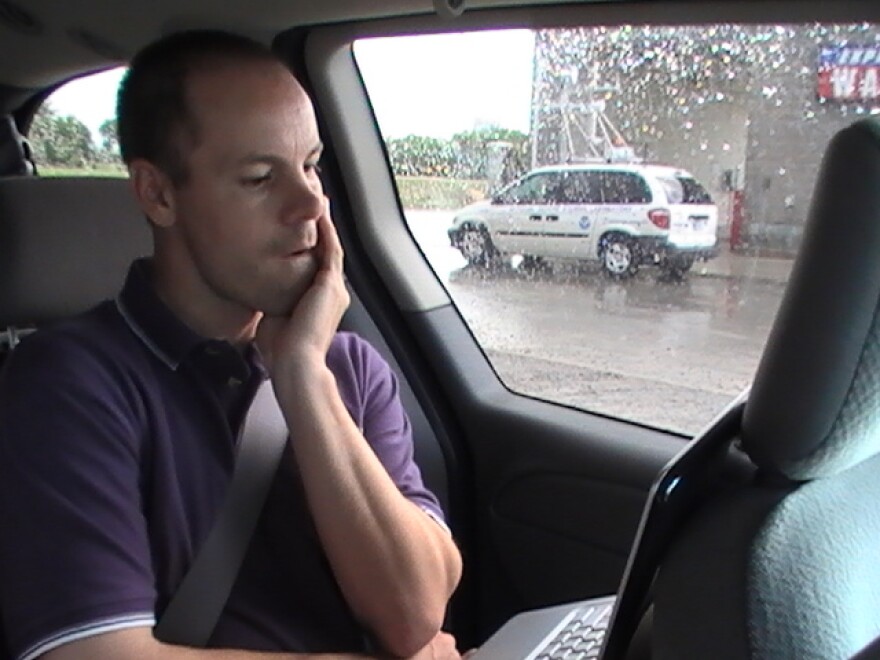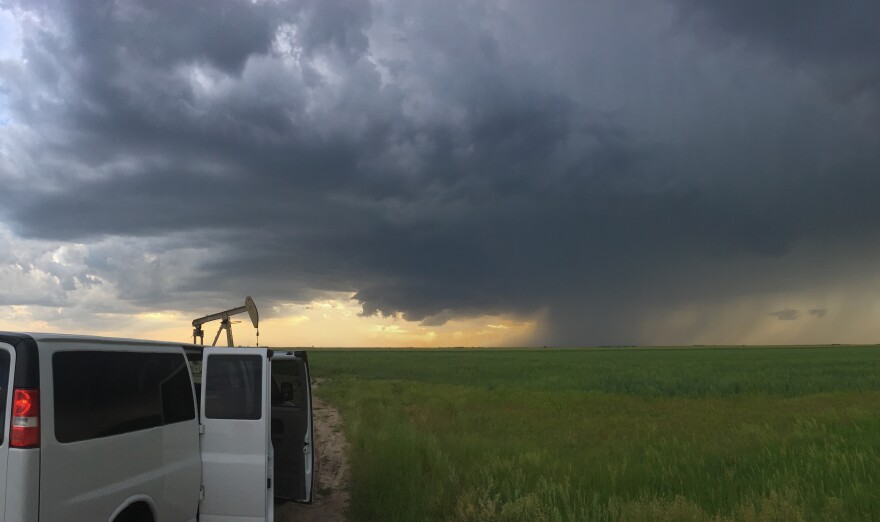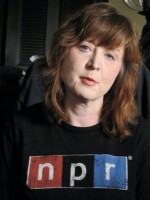The movie, “Twisters,” has been blowing audiences away since it opened in theaters on July 19. It features a strait-laced meteorologist named Kate and a YouTube star named Tyler who calls himself a “tornado wrangler.” Each, in their own way, explores the burning question at the heart of storm chasing: how exactly does a tornado form?
WPSU's Kristine Allen asked two veteran meteorologists from Penn State to talk about the science behind storm chasing, and what they thought of the way it was depicted in “Twisters.” She spoke with Yvette Richardson, Professor of Meteorology and Senior Associate Dean for the College of Earth and Mineral Sciences at Penn State, and Paul Markowski, Distinguished Professor of Meteorology and Head of Penn State’s Department of Meteorology and Atmospheric Science.
KRISTINE ALLEN
Full disclosure here. I was riding with both of you during VORTEX2, back in 2009, a scientific tornado chase, and did a story on that for WPSU. Paul and Yvette, how has knowledge of storms and tornadoes progressed since then?

PAUL MARKOWSKI
We have a pretty good feeling for environments that can give rise to storms that make tornadoes. And I think we also have a pretty good big picture view of what's needed to make a tornado, and how that happens from a 30,000-foot view perspective. I mean, if we couldn't, we wouldn't be very good at finding these tornadoes ourselves in field projects. But the devil is always in the details, and I'd say that's where a lot of the emphasis has been. You know, why would it make a tornado at this particular minute or hour?
KRISTINE ALLEN
Storm chasing is not exactly like what you see in movies like "Twister." Can you give me an idea of how you go about that? And how often do you do that as part of your work?
YVETTE RICHARDSON
Often, storm chasing happens as part of a big field project, so these are planned years in advance. We recently worked with a company who had small radio sondes, and we started launching these into storms.
KRISTINE ALLEN
Radio sondes? Can you explain that term?
YVETTE RICHARDSON
It’s a little instrument that you launch, like a weather balloon. It sends back pressure or temperature, humidity, so that you can understand what all of those fields look like in the atmosphere. What we were trying to do is not just to sample outside of the storm, but actually have these get carried into the storm.

KRISTINE ALLEN
So, how close did you have to get to a storm to do that?
YVETTE RICHARDSON
For that mission, not very close, really, because we were trying to launch them out ahead of the storm and then have them get carried in. So much different than our vortex two mission where we were close, as you know.
KRISTINE ALLEN
We were close! (Laughter) I’ll let Paul explain. Can you explain what VORTEX2 was, and the scale of it? And who was involved?
PAUL MARKOWSKI
Well, just taking a step back even -- I mean, the first “Twister” movie, which was filmed kind of at about the same time, the first VORTEX project took place. I was just finishing my senior year as an undergraduate student.
YVETTE RICHARDSON
And I was a grad student.
PAUL MARKOWSKI
You were a grad student, so both of us had essentially our whole careers ahead of us. So the release of this second “Twisters” film, for me, it was kind of interesting because now it was at the point of being able to watch this film and reflect back on all of the things I’d had a front row seat for over the last 20 something years, so that was kind of cool in that regard. A lot has happened since that first one came out, but the VORTEX project, this is an acronym, kind of clever, “Verification of the Origins of Rotation and Tornadoes Experiment.” So there was one initiative in 1994-95, and then a second one in 2009 and 2010, which that's the one that you came out and joined us for.

And this involved having lots of scientists like Yvette Richardson and myself out in the field. We each had slightly different scientific primary interests, perhaps. I mean, all of us collectively were at a similar goal, which is to get a better understanding of how these storms work, because if you have a better understanding, there's at least a chance you might be able to predict them better.
It's about detective work, getting to the truth, looking for evidence, turning over every stone. And we had a lot of gadgets to do that. And you saw the film, “Twisters.” One thing I was struck by is that actually the instruments they used in “Twisters” was not -- maybe not everybody would agree with this, but I'd say it's actually kind of primitive compared to what we've been using the last couple of decades. I mean, we've had phased array radars out in the field for 15 years now. We can get winds in a whole three-dimensional volume of the storm quite well, well beyond just the immediate confines of the tornado, like they were trying to do in “Twisters.” We have ways of getting temperature data, even data about the precipitation particles hail, rain, big raindrops, small raindrops, and none of that was in “Twisters.”
So usually with Hollywood, they're kind of swinging for the fences, doing something that's just over the top, far-fetched. And I'd say in terms of the observations they were gathering in “Twisters,” I felt like, 'yeah, okay, we can do that today.' And we've been able to do that sort of thing for a while now even.

KRISTINE ALLEN
There’s one other thing that happens in “Twisters.” Early on in the film they touch on the idea of possibly stopping a tornado, actually causing it to dissipate by getting chemicals of some sort into it. How far-fetched is that idea? (Laughter) Or is it?
PAUL MARKOWSKI (to YVETTE RICHARDSON)
You want to shoot that one up?
YVETTE RICHARDSON
Well, I think it is pretty far-fetched. I mean, I suppose the basic idea maybe has some merit, but the amount that they would need --
PAUL MARKOWSKI
Yeah. A thunderstorm, very roughly, is ten miles by ten miles by ten miles [for] its horizontal and vertical dimensions. So that’s a thousand cubic miles. If you're going to alter an entity that's a thousand cubic miles you're going to need a lot of stuff.
YVETTE RICHARDSON
And the flux of air coming in and trying to modify that in some meaningful way would be an enormous effort, which is why we haven't done it yet. (Laughter)
KRISTINE ALLEN
Interesting! Any other reactions to twisters?
PAUL MARKOWSKI
I thought, sadly, the diversity of the participants in the project was actually probably more diverse than our field is in reality, which is something everybody in meteorology and geosciences related fields is well aware of. And we've been trying to remedy this for a long time, and we still have a long way to go. But the movie is maybe an aspiration of what we can be someday.




